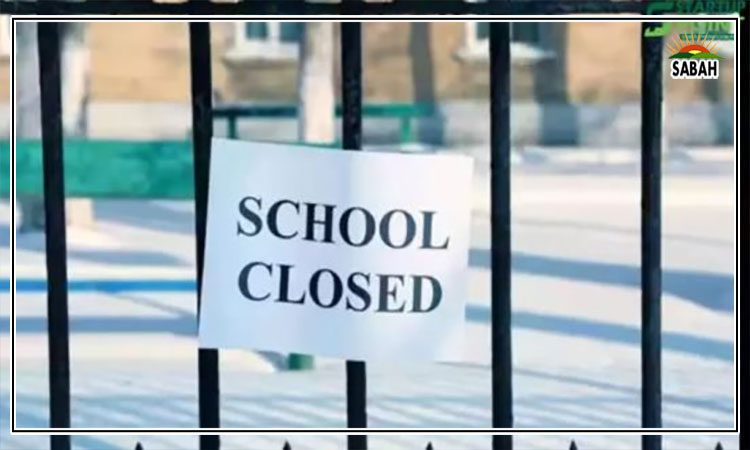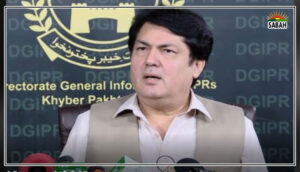Universities and the financial tightrope…Dr Ayesha Razzaque
In an oped in these pages a few weeks earlier (Defunding of public higher education, March 29), I wrote about the review conducted by the Special Investment Facilitation Council (SIFC) of federal funding for higher education in provinces and how provincial contributions match those.
In the outgoing FY2023-24, Sindh matched federal contributions with 185 per cent contributions from its own budget, Balochistan 76 per cent, Punjab only 6.0 per cent, and Khyber Pakhtunkhwa zero per cent. In conclusion of its review, the SIFC announced that the federal government would now require provinces to match federal contributions to higher education rupee-for-rupee that is: contribute a 100 per cent match.
In the FY2023-24 concluding this month, the Higher Education Commission (HEC) was allocated a recurring budget of Rs66 billion to support its operations, public universities in the ICT and other federal universities, and public universities in the provinces supplemented by a development budget that varies widely from year to year. However, the recurring budget allocation has been held near-constant since FY2017-18, which amounts to a gradual and covert defunding by inflation.
As the budget season draws closer, various papers including this one reported that for next FY2024-25, the HEC will be allocated only Rs25 billion (down from Rs66 billion this year) with the understanding that it will only support federal universities. After some pushback, primarily from the Sindh government, on Tuesday, June 4, the Finance Division issued a notification rolling back the cut and restoring the allocation to Rs65 billion. Thus, the higher education sector will suffer the indignity of having its budget frozen to the FY 2017-18 level for yet another year while inflation has risen another 12 per cent last year, but everyone is happy again. The end result looks like a successful budget negotiation by the federal government.
Those who work in the higher education sector should be familiar with this pattern. During the PDM government, I wrote in these pages (Abandoning higher education, May 28, 2022) about how the Finance Division directed the HEC to prepare a revised budget for Rs30 billion for the following year, less than a third of what had been requested and less than half of that years Rs65.25 billion. After a few media reports, opeds, and public uproar by provincial higher education entities and VCs, the government reversed its decision a few days later and reverted the allocation to the previous level of Rs66 billion (including the HECs operational budget).
The cynic in me sees this as a calculated move; The federal government comes up with a very low figure every fiscal year and after some uproar reverts it to the previous years figures which, besides inflation, glosses over the fact that every year the same amount is now supporting many more universities while salaries (up 35 per cent last year) fuels and utility costs (up 300 per cent), three major components of a universitys expenditure, keep skyrocketing.
Whether it happens by legally justified or ham-handed means, whether it happens in one fell swoop or by the gradual inflationary erosion of the real value of budget allocations, the direction of travel of public higher education has been towards defunding.
The HEC enjoys significant clout over universities by being the regulator. The power to disburse federal funds to public universities nationwide gives it even more. If the federal government no longer supported public universities in provinces, the HECs halo would slip and its influence would wane. The burden of funding public universities in the provinces would then fall on provincial governments which would have to find that money somewhere else.
Vice-chancellors (VCs) were concerned and, in the brief period the federal government had pulled the rug out from under them, had already approached provincial governments. In Sindh, VCs were caught in the crossfire, with the Sindh government deflecting funding frustrations back to the federal level.
VCs briefly hinted at taking the issue to court and, besides arguments built around the NFC, rightly pointed at the HEC Ordinance, which states in Sections 10(g-h), in rather clear terms, that the HEC will examine requests for recurring and development budgets, request funds from the federal government and provide them to public universities. Before its next attempt at extricating itself from supporting provincial universities, maybe the federal government will get its legal ducks in a row by amending the HEC Ordinance and negotiating a consensus in the Council of Common Interests (CCI).
Let us put all legalities of such a move aside. To be in a position of writing cheques for someone or some entity is power. But the economy has been a slow-motion train wreck since the PML-N began blowing reserves at the tail-end of its tenure, before the 2018 elections. Today, money is tight like perhaps never before. The federal government can literally no longer afford to hold on to this kind of power. The federal government briefly resorted to using the 18th Amendment as a pretence to retreat from supporting universities in provinces, citing devolution. Since it is only education, it is low on the priority list of every party and power center relative to everything else.
The election manifestos of the two major parties for this years elections were very generous in their plans for higher education. The PPP promised to establish universities of one type or another in every district and the PML-N endeavoured to grow access to higher-ed from 13 to 30 per cent of the university-aged population, raise spending on higher education to 0.5 per cent of GDP, and establish endowment funds in all universities easy to do when the federal government either significantly subsidizes or almost fully pays for provinces higher education spending.
Election promises on higher education are abundant, but who will foot the bill remains an unanswered question. The federal government dithering on its financial support suits none of them. The end result is that everyone the HEC, provincial governments, and public universities is miserable and no one is happy.
In the last decade, the HEC has instituted the requirement that VCs be PhD-qualified in other words, that they be academics. This came at a time when VC offices were increasingly occupied mostly by men with connections but whose only knowledge of what happens in a university came from their student days of decades past. But times are changing (again) and with them what is needed from university VCs. Like in many other countries, our public universities are struggling to meet expenses. Until now, most VCs have been playing the same one move in this situation: go hat in hand to an office of the provincial or federal government and ask for more money without a Plan B. You can only kick the can down the road for so long and, given the way we are headed, sooner or later this Plan A will no longer suffice.
The sudden and drastic federal defunding of provincial universities may have been averted for this year and replaced by the gradual defunding at the speed of inflation they have been subject to for the last seven years, but the trend is clear. If the burden of bridging the deficit between public funds allocated to universities and what they spend is not to be covered only by tuition fees collected from students, then VCs must start moving their institutions towards greater self-reliance and building new lines of revenue.
This requires an entirely different skill set of VCs. Once a mark of merit, a VC with an academic background may now be a mismatch for the monetary mayhem in universities. Rather than be the greatest researcher in the room, universities need VCs who can raise funds, attract donations, establish endowments, and leverage the resources at their institutions disposal. Todays financial crises demand that VCs be adept in fundraising and financial management. Universities must innovate in revenue generation, as relying solely on government funds and tuition fees is no longer sustainable.
If higher education funding evolves the way it is looking right now, we can expect an expansion of the role of provincial higher education departments. The federal HEC will continue its role of funding universities but will see it curtailed to universities under the federal government. At the national level, it should continue to serve as the regulator that sets (minimum) standards to ensure inter-provincial equivalence of qualifications, thus enabling the mobility of talent across the country.
Meanwhile, provincial governments will have more flexibility in how they structure and run their universities but will simultaneously be more responsible for how well they deliver and put the peoples elected representatives and public servants within closer reach of their voters.
Courtesy The News












